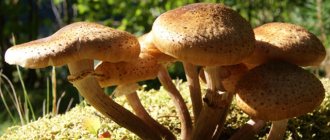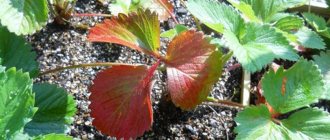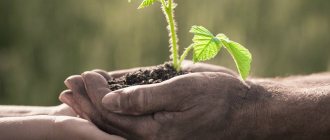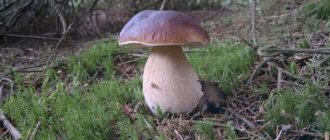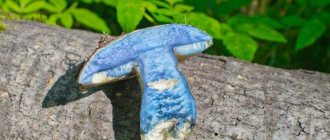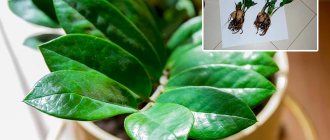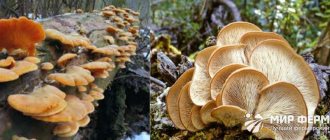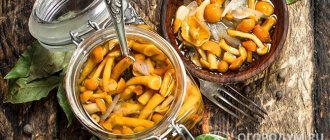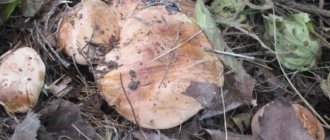The brick-red honey fungus is considered inedible. Despite the fact that the mushroom is part of the inedible group, some mushroom pickers collect it. Daredevils risk eating the mushroom after boiling and soaking, but its pulp does not have a distinct taste and aroma. It’s not worth risking upset or poisoning of the gastrointestinal tract for brick-red honey mushrooms. Another name for the mushroom is false foam, in Latin Hypholoma sublatertium. These are small mushrooms that grow in large colonies and usually appear on stumps and other dead wood. In some countries of Southeast Asia, they are grown artificially on a substrate of sawdust and other materials and are used in alternative medicine.
The main difference between this honey mushroom is the color of its cap. It has a brick-red color, which gives the mushrooms their name. With a diameter of about 2-10 cm. This species loves warm latitudes and chooses coniferous or mixed forests. This article will discuss all the features of this mushroom and how not to confuse it with the edible species of honey mushrooms.
What is brick-red honey fungus?
What does brick-red honey fungus look like?
The brick-red honey fungus has the following description. Brick-red honey fungus is also called summer honey fungus. This fungus, like its relative, parasitizes wood. But for this mushroom, dead wood and stumps are more preferable. You can also find the mushroom on wooden human creations: fences, bridges. This mushroom lends itself well to cultivation.
Other names for the mushroom:
- Hyfoloma brick-red;
- False honey fungus brick-red;
- Hypholoma sublateritium;
- Agaricus carneolus;
- Nematoloma sublateritium;
- Inocybe corcontica.
Many countries around the world are engaged in its cultivation under artificial conditions. Moreover, the wood, after the fruiting of this mushroom, acquires greater strength and wear resistance. The diameter of the cap reaches 10 cm. It is divided by color into concentric zones from light brown to ocher. With age, the plates of the mushroom begin to darken and take on the color of the cap, although initially they are white.
hat
The young mushroom is dome-shaped, hemispherical. As it grows, it becomes cone-shaped and spread out. The cap is fleshy and dense. The color of the cap is brownish-yellow, red-yellow, darker in the center than the rest of the area. The edges are lighter in comparison with the main color, often with spots. The surface of the cap is covered with flake-like scales of a yellowish-white color.
Cap pulp
White with a yellow tint, unpleasant smell, bitter taste. Along the edge of the cap, the remains of a membranous blanket covering the spore-bearing layer are visible.
Hymenophore
(bottom of cap) lamellar. The plates are frequent, narrow, adherent to the stem. At first they are white-yellowish, then yellow-brown, and with age they become gray-brown from maturing spores.
Spore powder
Dark brown, with a purple tint.
Records
Frequent, attached to the stem, in young individuals white with a yellowish tint, over time they become yellow-brown. In old mushrooms, maturing spores cause the plates to acquire a gray-brown tint.
Stipe
Grows up to 10 cm in height, hollow in structure. This variety of mushrooms prefers deciduous or coniferous trees and warm climatic conditions. Under the right greenhouse conditions, they will bear fruit several times in one season. As for cooking, the mushroom is a delicacy and has a wonderful taste, both boiled and fried, but is classified in the section of inedible mushrooms.
Expert commentary
Anastasia Rodionova
Certified Biologist
Ask a Question
The ring (the so-called “skirt”) on the leg: is clearly absent, but if you look closely, in the “ring zone” of some adult specimens you can see the remains of “threads” from the private coverlet.
Doubles and their differences
The brick-red false honey fungus has many counterparts: both inedible and edible species.
- Sulphurous or poppy false honey fungus. This edible variety grows in coniferous forests and is characterized by a yellow-orange cap when young, which becomes brick-red with age.
- Summer honey fungus. It is distinguished by the pale gray color of the cap, which is brown in the center. The fringe on the leg is completely absent. This mushroom is edible, but has an unpleasant odor.
- Sulfur-yellow honey fungus. It has a yellowish-brown cap with a brick-red center. It grows in deciduous and coniferous forests. It is a poisonous mushroom.
- Bordered gallery. This poisonous variety is characterized by a membranous ring on the stalk in juveniles and a edging around the edge of the cap. This species grows only in deciduous forests.
Chemical composition of the mushroom
Honey mushrooms contain a high water content (up to 90% on average), which ensures their low calorie content. The remaining 10% comes from proteins (4%), fiber (2%), minerals (1.5%), carbohydrates (1.5%) and fats (1%). The nutritional value of the mushroom - per 100 g of product in grams - is as follows:
- dietary fiber – 5.1;
- proteins – 2.2;
- fats – 1.2;
- carbohydrates – 0.5;
- disaccharides and monosaccharides – 0.5;
- ash – 0.5.
The chemical composition of honey mushrooms includes essential amino acids and organic acids, antioxidants, and microelements. Among them:
- vitamins A, B, C, E;
- potassium – 400 mg per 100 g;
- iron;
- magnesium;
- calcium;
- phosphorus;
- sodium and others.
Differences from edible mushrooms
The brick-red false honey fungus differs from the ordinary honey mushroom in the following characteristics:
- Bright and rich brown color.
- A barely noticeable trace of the belt on the leg.
- Unpleasant smell of pulp.
| Group: | Lamellar |
| Records: | Yellowish-brown, brownish-brown, yellowish-white |
| Color: | Brownish yellow, red yellow |
| Peculiarities: | The center of the cap is darker than the edges |
| Department: | Basidiomycota (Basidiomycetes) |
| Sub-department: | Agaricomycotina (Agaricomycetes) |
| Class: | Agaricomycetes (Agaricomycetes) |
| Subclass: | Agaricomycetidae (Agaricomycetes) |
| Order: | Agaricales (Agaric or Lamellar) |
| Family: | Strophariaceae (Strophariaceae) |
| Genus: | Hypholoma (Hypholoma) |
| View: | Hypholoma lateritium (Brick red honey fungus) |
Similar species
Galerina bordered
Winter honey mushrooms
Dark honey fungus
Summer honey fungus
The sulfur-yellow false honey fungus is a close poisonous relative of the brick-red false honey fungus. The diameter of the cap is 2-7 centimeters. In young specimens, the cap is first bell-shaped, then becomes prostrate. The color of the cap is sulfur-yellow, brown-yellow, yellowish. There is a darker stripe in the center, and a lighter color along the edge. The length of the leg reaches 10 centimeters with a width of 0.3-0.5 centimeters. The leg is hollow inside, smooth, light yellow in color.
Sulfur-yellow false fungus is a poisonous mushroom, which 6 hours after entering the stomach is accompanied by nausea, excessive sweating, severe vomiting and loss of consciousness.
Galerina carinatum is a poisonous mushroom. The diameter of the cap is 1.7-4 centimeters. The color of the cap is brown or yellow-brown. Older specimens have flatter caps and darker legs and plates. The membrane ring is clearly visible on the stem of young mushrooms, but with age it disappears.
These mushrooms are widespread in Europe, Asia and North America, and they are also found in Australia. Galerina fringe is a wood-destroying fungus and most often lives on coniferous trees, although it is sometimes found on deciduous trees. These mushrooms are extremely poisonous, containing the same deadly toxins as toadstools. In case of poisoning with a large number of mushrooms, severe liver damage occurs; in the absence of prompt treatment, death is possible.
Similar edible species
False mushrooms are similar to the following types of edible mushrooms:
- The summer honey fungus has a medium-sized cap – 3-6 cm in diameter. The shape is convex, becomes flat during ripening, and there is a tubercle in the center. In sunny weather the mushroom turns honey-yellow, and in rainy weather it turns brown. The cap is dark at the edges and lighter in the middle. The leg reaches 7 cm in height and 0.4-1 cm in width. The leg is dense, smooth and light at the top, and there are dark scales below the girdle. The belt is clearly visible, but as the mushroom matures, it may disappear. Summer honey mushrooms grow in groups on rotten wood and damaged deciduous trees.
- Winter mushrooms grow on stumps and tree trunks. This species is not afraid of cold and grows under snow. The favorable time for fruiting is a thaw. Winter honey fungus has large, adherent plates of white or cream color, which subsequently darken. The cap is first spherical, then becomes flat. Its diameter is 10 cm and has a yellow-brown color. In adults, dark spots and stripes appear. The length of the leg is 8 cm. It is thin and elastic, brown in color. A distinctive feature is the absence of a rim on the leg.
Can it be eaten?
Scientists do not have a consensus on the edibility of brick-red false honey mushrooms. These mushrooms are considered edible in Germany, Italy and Canada, but in our country they are poisonous, so mushroom pickers avoid them.
But not all over Russia treat brick-red false honey mushrooms with such danger. For example, in Chuvashia, local residents collect these mushrooms and consider them quite edible. Every year people die from mushroom poisoning, but most often doctors determine only the poison, and not the name of the mushroom, so it is impossible to say that cases of poisoning occur specifically from brick-red false mushrooms, but this possibility cannot be denied.
It is known that false honey contains toxins that cause stomach upset. Poisoning with false honey mushrooms causes stomach pain, vomiting and headache.
If you eat honey mushrooms for several years, then immunity to toxins is formed, in this case poisoning does not occur. But, still, you should not risk your health and experiment with these mushrooms.
Why is brick-red false honey fungus dangerous?
First of all, pay attention to the appearance of a single mushroom. In addition to the bright orange color of the cap, which in adult individuals takes on a brick-red hue, attention is drawn to scraps of the white covering. It remains in large flakes on the edges of the cap, which is covered with a kind of fringe. The second distinctive feature is the absence of a tight ring on the stem. This element is considered mandatory for real autumn honey fungus, which is suitable for consumption.
It is believed that honey mushrooms contain toxins that cause stomach upset. Poisoning with red-brown honey mushrooms is accompanied by the following symptoms:
- nausea;
- vomit;
- stomach ache;
- headache;
- dizziness.
Most often, false mushrooms cause damage to the central nervous system. This may include mild forms of dizziness, headaches, nausea and vomiting. With more serious damage, increased heart rate, increased blood pressure, and nosebleeds are possible.
Without timely medical care, a person can fall into a coma and die from cardiac arrest or dislocation of hemispheric structures due to hemorrhage in the brain stem.
Continuing the description of the brick-red honey fungus, we should add that as it grows, its rounded cap takes the shape of a saucer with a diameter of up to 5 cm. A thin long leg with a diameter of up to 1.5 cm.
Where and how does it grow
Brick-red false honey fungus grows everywhere - its range extends to the central regions of Russia, the Far East, the Urals, and Siberia. It also grows in Europe and North America. Prefers mixed or deciduous forests, roots of fallen trees - birch, alder or aspen; stumps covered with moss. It is rarely found alone; it grows in large groups, even colonies. Its active growth begins in August and continues throughout the fall, until the onset of cold weather.
Brick-red representatives of the Strophariidae do not grow on coniferous trees. Most often they can be found in late autumn on old fallen logs and stumps of deciduous trees, especially in places where they have rotted. In productive years, brick-red honey fungus grows on wooden fences or other wood products.
Another sign of false mushrooms is the growing area and the choice of wood species for parasitism. This type of poisonous honey mushroom prefers light, well-ventilated deciduous forests for its growth. They grow exclusively on fallen trunks and stumps left over from deciduous trees. Most often these are linden, aspen, birch, and alder. This species of false mushrooms is not found on coniferous trees.
Primary processing and preparation
Fruiting bodies are inspected for the presence of worms and forest litter. To make brick-red false foam suitable for consumption, the collected mushrooms should be soaked for 2 hours in cold water (changing the water), then, adding salt to the water in a saucepan, boil for 20 minutes, completely remove the broth and rinse the mushrooms several times with cold water. As a result, bitterness is eliminated, smell and taste are improved. Processed fruiting bodies can be added to roasts and soups, and can also be pickled.
Properly prepared brick-red false honey has been eaten for a long time in North America, in the north and south of Europe, in Chuvashia and Karelia. However, in central and western Europe it is considered poisonous. Apparently, the composition and properties of this conditionally edible mushroom depend on local conditions, so that domestic forest miners, following the Karelians, may well collect it and use it after proper processing.
Fruiting time
Brick-red honey fungus is found already in July. The period of mass fruiting of this mushroom occurs at the end of August and September. Single mushrooms can be found until the first frost. The fruiting period of brick-red honey fungus depends on weather conditions. Moreover, the harvest will be much larger if the autumn is warm and rainy. Mushrooms do not grow well in dry weather. The mushroom usually appears in August and grows until lasting frosts. Fruiting time occurs at the end of August and beginning of September.
How to distinguish honey mushrooms.
How to distinguish a false honey mushroom from a real one
False honey mushrooms include several types of mushrooms that are very similar to edible honey mushrooms. In addition, they are easy to confuse, because false honey mushrooms like to grow in the same places as edible ones - they grow in families on stumps, fallen trees, on trunks and protruding parts of tree roots. Some types of false mushrooms are inedible, others are conditionally edible, and others are poisonous.
However, a mushroom picker, especially a beginner, should not experiment and should never forget the main rule: “If you’re not sure, don’t take it!” Collect only real honey mushrooms when you are absolutely sure that it is they! If you have the slightest doubt, it is better to abandon the idea of putting the mushroom in the basket. The most important sign by which you can distinguish a real honey mushroom from a false one is the membranous ring (skirt) on the leg. This ring is a remnant of the covering that protects the fruiting body of the mushroom at a young age. False mushrooms do not have such a ring. They even came up with a poem for children to better remember this main difference between edible mushrooms.
There are other differences too.
- The smell of edible honey mushrooms is a pleasant mushroom, while false honey mushrooms emit an unpleasant earthy smell.
- The caps of inedible honey mushrooms are more brightly and loudly colored than those of edible ones. The tone can vary from sulfur yellow to brick red (depending on the species). Edible honey mushrooms have a modest, dull light brown color.
- Edible honey mushrooms have a cap covered with small scales, while false honey mushrooms have no scales on the cap - it is usually smooth. But you need to remember that edible honey mushrooms at age also no longer have scales on their caps (see photo of old honey mushrooms above).
- There are also differences in the color of the plates (on the back of the mushroom cap). The plates of false mushrooms are yellow, those of old ones are greenish or olive-black, while those of edible mushrooms are cream or yellowish-white.
- They note the bitter taste of false honey mushrooms, which edible honey mushrooms do not have, but it is not worth getting to the point of assessing the taste - and without it there are enough signs by which you can distinguish an edible honey mushroom from a false one.
How brick-red honey mushrooms grow.
Very important: how to collect honey mushrooms correctly?
Honey mushrooms grow throughout Russia and are suitable for human consumption. The collection season is all year round, including winter. Most species of this family share a number of characteristics: they are parasitic mushrooms that grow on trees and stumps in large groups. They are practically never wormy and have excellent taste.
Types of mushrooms
In our country you can find 4 edible species of these mushrooms:
- real, autumn;
- meadow;
- summer;
- winter.
They differ from each other in appearance, season of growth, and places of growth.
Meadow honey mushrooms (non-rotting mushroom, meadow mushroom)
These mushrooms appear very first, in early spring.
Collection season: from May to July.
They grow in circles in clearings and on the sides of forest roads. Like many of their family, meadow mushrooms glow slightly in the dark. Because of this, many superstitions have arisen. Thus, our ancestors believed that these mushrooms grew in places where witches danced and that with their light they were able to lead and bewitch a traveler.
Appearance: dense thin stem up to 10 cm long, yellow-brown cap, darker towards the center; The plates are adjacent to the cap. The mushrooms themselves are very small, weighing about 1 gram.
Unlike their other relatives, meadow grasses love free space and do not grow on stumps and trees.
Read more in the article about meadow honey mushrooms.
Summer (fake, talker)
Summer honey mushrooms can be found in mixed or deciduous forests in northern latitudes with a temperate climate. However, in mountainous areas, talkers settle on spruce and pine trees.
Collection season: April-November.
In a favorable climate they can bear fruit all year round. They grow in large families on rotten wood and stumps. Appearance: stem up to 7 cm high, dark brown cap with a lighter tubercle in the center, frequent plates.
In young mushrooms, a filmy, narrow covering arranged in a ring is clearly visible, but with age it may disappear. The absence of a ring is also characteristic of similar poisonous mushrooms.
Also read the article about summer mushrooms.
Autumn (real)
The most common type of hemp mushrooms, they grow in any climate except for permafrost areas. They prefer tree trunks and stumps. Like most of its relatives, they are parasites, but this species affects not only trees, but also herbaceous plants, including potatoes. They grow in large groups, preferring damp places.
Collection season: from August until the first frost.
Appearance: a larger cap (average size 9-10 cm, sometimes grows up to 17 cm) can be of different shades of yellow (from greenish-yellow to brownish), a dense stem up to 10 cm high, covered with scales, a clearly visible ring under the cap.
The color of the cap depends on the tree where honey mushrooms grow: brown ones grow on coniferous trees and oaks; lighter ones grow on deciduous trees, yellow ones grow on poplars. The hat is inseparable from the leg.
Read more in the article about autumn honey mushrooms on the Mister Summer Resident portal.
Winter (winter mushroom)
Winter mushrooms are the only mushrooms that cannot be confused with their poisonous counterparts. Unlike all other mushrooms, winter mushrooms tolerate frost well, simply stopping their growth during cold weather.
With the arrival of warmth, they “wake up” and continue to grow. Tree trunks and stumps are also taken in for growth. Most often they can be found on poplar and maple. The habitat is the temperate climate of the Northern Hemisphere.
Collection season: November-March.
They grow higher up the trunk, so for “hunting” you will need a long stick with a hook. In appearance they are similar to summer ones, but have a bright, orange-red cap and do not have a “skirt”. Experts advise this species to be subjected to longer heat treatment, as they are capable of accumulating toxins.
Winter mushrooms are very popular in the East (Japan, Korea); they are grown in industrial quantities up to 100 tons per year.
Be sure to read the article on how to grow honey mushrooms at home.
Mr. Summer resident advises: rules for collecting honey mushrooms
The most important thing when collecting is to be able to distinguish edible from inedible. In the forest you can find many false mushrooms, dangerous to humans, but outwardly similar to honey mushrooms.
Important: If a mushroom raises the slightest doubt about its edibility, you should not take it. Read about false honey mushrooms.
Signs that a mushroom is inedible:
- No "skirt".
- Unpleasant or earthy odor (real ones have a pleasant mushroom aroma, with light woody notes).
- The winter species has a bright cap, the false ones have a smooth cap, and the edible ones have small scales. Old mushrooms can also be smooth, but inexperienced mushroom pickers should not take risks.
- The plates are yellow or green in color (an edible mushroom with light-colored plates, sometimes yellowish).
- Bitter taste. But this method of checking is for the most extreme case.
Dangerous doubles again
To be sure, it is better to consult with an experienced person.
Also, you should not collect honey mushrooms near industrial enterprises. They, like many other mushrooms, are capable of accumulating heavy metals.
It is better to go for honey mushrooms after the rainy period, when it becomes clearer. Usually there is an abundance of mushrooms 3-4 days after rain.
After harvesting, it is worth remembering the place. These mushrooms do not like to change their place of residence, preferring the same place from year to year.
It will depend only on the weather when honey mushrooms go to the Moscow region, but traditionally autumn ones can be collected as early as September. When collecting, you should be very careful, since brick-red mushrooms that are not suitable for food are often found in the forests near Moscow. The distinctive features are the same.
In addition to its wonderful taste, honey mushrooms have traditionally been used in cosmetology and medicine. In the East they are still used to treat joints, cramps, and muscle relaxation.
Contraindications to the use of honey mushrooms
You should take with caution:
- people susceptible to intestinal and stomach diseases;
- children under 7 years old;
- women during pregnancy and breastfeeding.
Honey mushrooms are tasty and healthy mushrooms, rich in vitamins and minerals. But, like any other product, they require moderation in use. In this case, they will only bring health benefits.
Source: https://mrdachnik.com/kogda-sobirat-opyata
Why are brick mushrooms useful?
In Japan, red honey fungus with a brick tint has long been successfully cultivated on an industrial scale and is called kuritake. When young, it is difficult to confuse it with other mushrooms, which is extremely useful in practical terms. Beneficial properties of brick-red honey mushrooms:
- general strengthening of the body;
- increasing immunity;
- normalization of metabolism;
- lowering blood pressure levels;
- calming effect on the nervous system;
- anti-inflammatory properties;
- removing bad cholesterol;
- improving performance.
Representatives of oriental medicine believe that honey fungus is capable of inhibiting the growth of malignant tumors. Traditional medicine says that with regular use, a person’s immune system resistance increases, blood cholesterol levels decrease and liver cells are restored. During prolonged cooking, false honey fungus loses its toxic properties. Despite this, you should not take risks and endanger your health by eating these mushrooms.
Growing at home and in the country
This mushroom has long been successfully cultivated on an industrial scale in Japan, where it received its name “kuritake.” Local housewives first boil it, then prepare all kinds of dishes, including pickled ones. It is quite possible to grow mushrooms in the country. There are several ways: on the stumps of felled trees, in a greenhouse, in jars. The most optimal and less expensive method is to cultivate deciduous trees on stumps: birch, poplar, apple, and pear.
Growing process:
- Mushroom mycelium should be introduced into holes made in the wood (1–2 cm deep).
- Cover the area with moss.
- To stimulate the growth of fruiting bodies, the blanks are sent to a basement with a constant temperature of +15–20 ºС and covered with straw.
- As soon as the stumps are overgrown with mycelium, you need to take them out to the site and dig them in.
- Next year you can already get a harvest of honey mushrooms, and they will grow until the log falls apart.
If the mycelium has been colonized in growing stumps, then the ground around them should be periodically watered. If you use felled logs, they must first be soaked in water for several days and only after that the mycelium should be populated.
Brick-red honey mushrooms can be grown at home, but for this you will need to properly prepare the nutrient substrate:
- Mix seed husks or small sawdust with small wood shavings in a 2:1 ratio in a deep container.
- The mixture must be boiled, then thoroughly drained in a colander.
- As soon as it cools, add nutritional supplements: starch, oatmeal and corn flour at the rate of 8 g of starch and 25 g of each of the two types of flour per 1 kg of sawdust.
- The resulting substrate is placed in one- and three-liter jars and compacted.
- Containers must be sterilized for 2 hours and cooled.
- It is necessary to make holes 5–7 cm deep in the substrate and add mycelium.
Containers are stored in a damp, dark room with a constant temperature of +24 ºС. As soon as the fruiting bodies begin to germinate, the mycelium should be moved to a cooler place with a temperature of +14-+16 ºС. To make harvesting convenient, place a paper bag over the neck of the jar.
Winter honey mushrooms (Flammulina velutipes): photos, videos, description of mushrooms, the difference between false honey mushrooms and edible ones
Encyclopedia "Mushroom-Info" Conditionally edible mushrooms Winter honey fungus (Flammulina velvetypodia)
It is generally accepted that winter is not the time for mushroom season. Indeed, few people can be found in the forest during such a cold period. However, for experienced mushroom pickers, winter is not a reason to warm up at home by the stove.
It is with the onset of cold weather that the opportunity arises to go “hunting” for winter honey mushrooms. It turns out that harvesting mushrooms at this time of year is not without meaning. It is in the winter forest that bright fruiting bodies grow abundantly, which will be discussed.
For clarity, on this page you can read the description, photos and videos of winter mushrooms.
Winter honey mushrooms (flammulina velutipes) are cap mushrooms belonging to the Rowaceae family. These fruiting bodies are very valued among many mushroom pickers, because they have a pleasant and delicate taste, therefore they are widely used in cooking.
They are perfect for processes such as pickling and salting. Various soups and sauces are also prepared from them.
However, some people prefer not to deal with winter mushrooms, since during the cooking process they become slimy, although this feature does not affect the taste of the dish in any way.
Another name for the winter honey fungus is Flammulina velvetypodia. It indicates a characteristic feature of the appearance of a given fruiting body. As for edibility, it belongs to category 4. This means that the mushroom requires mandatory heat treatment.
Below you can see a more detailed description of winter mushrooms and photos that clearly show the characteristic features of their appearance.
Winter edible honey mushrooms: description of what mushrooms look like in the forest (with photo)
Latin name: Flammulina velutipes.
Genus: Flammulina.
Family: Ordinary, also included in the Negniuchkov family.
Synonyms: Agaricus velutipes, Collybia velutipes, Collybidium velutipes, Gymnopus velutipes, Myxocollybia velutipes.
Russian synonyms: flammulina velvety-footed, collibia velvety-footed, winter mushroom. In the West they are most often found under the Japanese name "enokitake".
Cap: rounded-convex, becomes flatter with age. The diameter ranges from 2 to 8 cm, but some large specimens can reach 10 and even 12 cm.
The color of the cap varies from yellow or honey to orange-brown. In most cases, the edges of the cap have a lighter shade than the central zone. Mucous, smooth, with a slight drying it takes on a glossy appearance.
Pay attention to the caps of edible winter mushrooms by looking at the photo.
Leg: cylindrical, tubular, dense, velvety, 3-8 cm high, up to 1 cm thick. The upper part has a lighter shade (yellow), and the lower part has a darker shade (brown or red).
Flesh: thin, hard at the bottom edge of the stem and softer at the cap. White or light yellow, with a faint pleasant smell and taste.
Laminae: sparse, slightly adherent to the stem, sometimes shortened. The color of the plates in young individuals ranges from cream to yellowish-white, darkening with age.
We invite you to look at a few more photos of the winter honey fungus in the forest:
As you can see, they have a brighter color than representatives of other types of edible honey mushrooms. Knowing what winter mushrooms look like in the photo, it will be much easier for you to find them in the forest.
Edibility: conditionally edible, belongs to category 4.
Winter variety of honey mushrooms: photos and how to distinguish edible mushrooms from false ones
Application: used in cooking and medicine. They are pickled, salted, fried, caviar, soups and sauces are made from them. From young specimens, only the lower part of the stem is removed; from mature specimens, only the caps are taken.
Mushrooms are very popular in Japanese cuisine. In medicine, it is used for the treatment and prevention of benign tumors - fibroids, myomas, adenomas, mastopathy and other types of oncology.
Used for thrombophlebitis and increased blood clotting.
Similarities and differences: the winter variety of honey mushrooms does not have false poisonous counterparts. Still, their appearance can be confused with the summer honey fungus and spindlefoot collimia.
However, it is almost impossible to find them near the winter honey fungus. The fact is that the time of their fruiting is completely at odds with the season of flammulina activity.
But be that as it may, you need to know some differences between them.
As can be seen in the photo, you can distinguish winter honey mushrooms from false ones by the presence of a ring on the stem: in edible species it is clearly visible, while in false ones it is completely absent.
Collibia spindlefoot is a fruiting body of questionable nutritional quality. The mushroom cap has a pronounced red-brown color. The leg is often twisted, noticeably narrows downwards, and has a reddish tint. By comparing photos and descriptions of winter mushrooms with false species, you can easily determine where and what fruiting bodies are.
Distribution: winter honey fungus grows in the northern temperate zone, being a parasitic fungus. Prefers stumps, dead wood, live and damaged trunks. Most often, flammulina can be found on deciduous trees: willow, poplar, aspen, elm, maple, etc. It grows on conifers much less often, sometimes choosing dead wood.
Winter mushroom season: where and when mushrooms grow
Many novice mushroom pickers are interested in when winter mushrooms grow? Judging by the name, we can conclude that the winter mushroom season starts with the onset of cold weather. As already noted, this type of fruiting body grows most often in deciduous forests, but sometimes they can be found in city gardens and parks, near roads and industrial enterprises.
Flammulina grows in large families, like most other species of honey mushrooms, forming honey-golden “bouquets”. Due to their bright color, winter mushrooms are often grown as a decorative decoration for household plots. However, it should be remembered that these fungi destroy wood, leading to its drying out and death.
Depending on where winter mushrooms grow, you can tell what taste and smell they have. Thus, growing on deciduous trees, the pulp of the mushroom will have a more delicate taste and aroma. And when settling on a pine or spruce tree, the fruit body acquires a characteristic smell and a bitter, resinous taste.
When do winter mushrooms appear and how to find them in the forest
The period when winter honey mushrooms appear depends on the climatic characteristics of individual areas. Traditionally, the first harvest appears at the end of September - beginning of October.
The peak of abundant fruiting occurs in November-February; sometimes a large number of mushrooms can be observed in May.
Thus, under certain weather conditions, winter honey fungus can be collected almost all year round.
One of the characteristic features of flammulina is that it tolerates frost well. During frost, the mushroom freezes, but does not die.
At the first thaw, its growth resumes, and the structure of the fruiting body itself regains its flexibility and original appearance. I must say that you can find this mushroom even under thick snow.
It can be safely collected either frozen or thawed, because even with severe frosts it will not lose its taste.
Knowing when winter mushrooms grow and under what conditions this process occurs, many mushroom pickers do not miss the opportunity to visit the forest during the cold season. They may find that during frosts the caps of honey mushrooms begin to crumble when pressed, but do not be afraid of this. In a warm room they will thaw and regain their former elasticity.
How can you find winter mushrooms in the forest? Fans of “silent hunting”, who have many years of experience in this matter, note that such an activity is not an easy one. In addition to fallen trees and stumps, you need to look into hollows.
Sometimes you can find a whole “army” of honey-golden “soldiers” there. In addition, when picking mushrooms, you should not only look at your feet, but also look up. Often winter mushrooms grow at a height that can reach up to 3 m.
In this case, it is worth taking with you a long stick with a hook, thanks to which it will be easy to remove mushrooms from the tree.
How quickly do winter mushrooms grow and when can they be collected?
Also, many novice mushroom pickers are interested in how quickly winter mushrooms grow? As you know, all mushrooms, without exception, grow very quickly. If the weather outside the window is favorable for the growth of the fruiting body, then after 2-3 days you can go to the forest.
Under what circumstances does winter fungus grow? In this case, everything will depend on weather conditions. In the absence of severe and prolonged frosts, the fruiting body can grow in a few days. According to studies, flammulin can increase by 1-2 cm per day.
And vice versa, if frost sets in, then the growth of such honey mushrooms practically stops, but only until the first thaw. It is with her arrival that the mushroom continues to grow, delighting the eyes with its variegated color in the “naked” forest.
Therefore, in order to know when you can go collect winter honey mushrooms, you need to navigate the weather, because the growth of fruiting bodies depends on it.
The surface of the cap of the winter honey fungus is slightly covered with mucus, which does not disappear even when boiled. In addition, it is customary to remove the stem of the fruiting body completely, as it is too rigid.
There is also information that the pulp of the mushroom may contain a small amount of toxins, so it should always be subjected to heat treatment.
To do this, after cleaning, boil the winter mushroom in salted water for at least 20 minutes, and then begin preparing the dishes.
article:
Source: https://grib-info.ru/uslovno-syedobnie/grib-zimnij-openok-flammulina-barxatistonozhkovaya.html
